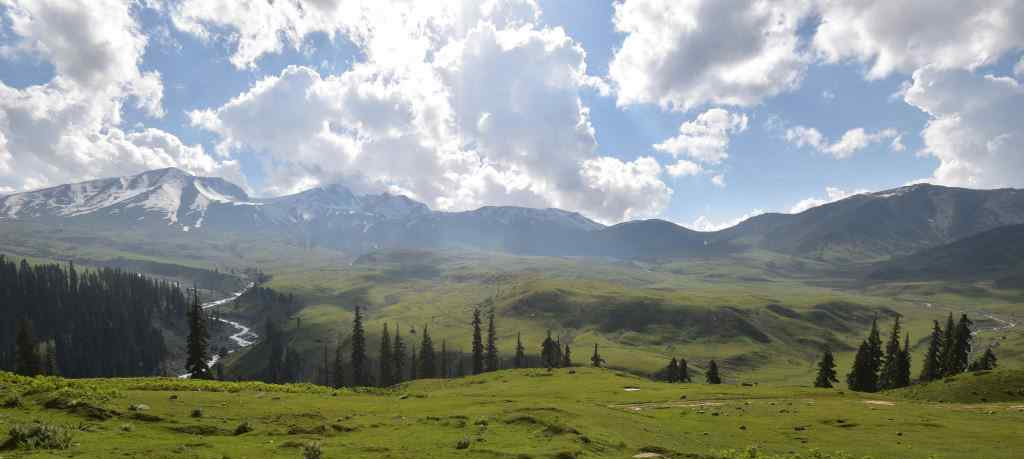Dr. Naseer Ahmad Lone
Kashmir, famously known as paradise on earth, is witnessing an extraordinary surge in tourism. From the serene Dal Lake to the majestic peaks of Gulmarg, an increasing number of visitors are flocking to experience its stunning landscapes and rich cultural heritage. While tourism serves as a crucial economic support, it can also pose significant challenges. If not carefully managed, it risks causing environmental degradation, rampant urban development, and the exhaustion of the region’s fragile natural resources.
The signs of trouble are already emerging. Dal Lake is diminishing under the burden of pollution, the glaciers that nourish Kashmir’s rivers are retreating alarmingly, and unregulated construction is transforming once-untouched valleys into busy urban landscapes. Without a comprehensive green governance strategy, Kashmir may soon confront an ecological crisis similar to those facing Shimla and other regions of Himachal Pradesh. The choice is clear: either commit to sustainable tourism practices or sacrifice its ecological and cultural heritage forever.
Learning from Himachal Pradesh: A Cautionary Tale for Kashmir.
The unchecked tourism in Himachal Pradesh has resulted in pollution, resource depletion, and failing infrastructure. In 2018, Shimla grappled with a severe water crisis, leading to hotel closures and leaving residents without access to drinking water. Traffic jams and air pollution have escalated in Manali and Shimla due to an influx of diesel vehicles. Plastic waste and untreated sewage now inundate the mountains, and over-construction has triggered landslides and soil erosion. If Kashmir does not take action, it risks falling into the same ecological turmoil. The government must heed the lessons from Himachal Pradesh and act swiftly to protect Kashmir’s vulnerable environment.
The Emerging Environmental Challenges in Kashmir.
Despite its extensive natural beauty, Kashmir is particularly susceptible to environmental degradation. The delicate Himalayan ecosystem cannot manage uncontrolled tourism growth, and without the right policies, the following threats may become irreversible:
- Uncontrolled Construction and Urbanization.
- Pollution and Waste Management Issues
- Water Shortages and Resource Depletion
- Traffic Congestion and Air Quality Deterioration
The Urgency for a Green Governance Framework
To safeguard Kashmir’s environment and sustain its tourism-driven economy, the government must enact robust green governance measures that harmonize development with ecological conservation.
- Sustainable Tourism Initiatives.
The government should establish visitor limits in ecologically sensitive zones, akin to what’s been implemented in Ladakh’s Pangong Lake region. Promoting homestay-based tourism will alleviate pressure on urban facilities, and encouraging off-season tourism can distribute tourist traffic more evenly throughout the year.
- Zero Waste and Plastic-Free Initiatives.
The government must enforce strict bans on plastic and promote biodegradable packaging in the tourism sector. It’s vital to establish waste segregation and recycling facilities at all key tourist spots, as well as impose penalties for improper waste disposal.
- Sustainable Infrastructure Development
Construction should be prohibited in protected ecological areas and near water bodies. There should also be investments in cable car systems, electric buses, and cycle-friendly pathways to support sustainable transport. Moreover, prioritizing solar and hydropower energy for hotels and public spaces is essential.
- Community Engagement and Awareness
Educational hoardings to inform tourists about responsible travel and environmental stewardship are crucial. Training local businesses to adopt eco-friendly practices and offering incentives for green initiatives, such as tax benefits for sustainable accommodations, are vital steps.
Kashmir’s Future: Embrace Sustainability or Face Calamity?
The future of Kashmir’s tourism industry hinges on the decisions made today. Without prompt action, the region risks transforming into another Shimla—overwhelmed by pollution, burdened with waste, and facing resource scarcity.
Nevertheless, through effective policies and a solid commitment to green governance, Kashmir can emerge as a beacon of sustainable mountain tourism, preserving its natural splendor and cultural heritage for generations to come.


Leave a Reply